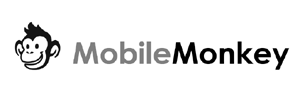- HOME
- ABOUT US
- SERVICES
- CUSTOMER STORIES
- OUR EXPERTS
- CONTACT US
- BLOG
In need of some sound digital marketing advice?
Book a free consultation with one of our experts.

Making a difference in our clients’ lives
We positively impact the lives of our clients beyond their KPI reports.
Solving digital marketing problems for over 100,000 businesses worldwide
What marketing problem are you trying to solve?
TALK TO US. WE CAN HELP!
Learn how we've helped businesses like yours for over two decades.
WSI Digital Marketing Services
Solutions to your specific marketing problems
We don't believe in the "one-size-fits-all" approach to digital marketing. Instead, we take the time to understand your organization and customers so we can recommend a strategy based on your individual business needs. When you invest in any of WSI’s digital marketing solutions, you’ll have some of the top minds in the industry contributing to your goals and vision.
Solving digital marketing problems for over 100,000 businesses worldwide
What marketing problem are you trying to solve?
TALK TO US. WE CAN HELP!
Learn how we help businesses like yours
WSI Digital Marketing Services
Solutions to your specific marketing problems
We don't believe in the "one-size-fits-all" approach to digital marketing. Instead, we take the time to understand your organization and customers so we can recommend a strategy based on your individual business needs. When you invest in any of WSI’s digital marketing solutions, you’ll have some of the top minds in the industry contributing to your goals and vision.
You have a vision. We can help make it happen.
You have a vision. We can help make it happen.
We are the World’s Largest and Most Experienced Digital Marketing Agency Network




Up to 74% Increase in Organic Traffic and Inquiries
Mike Chavez Painting is a local business that was looking to improve their website design to better showcase their work and enhance their good reputation. Since partnering with WSI, they have launched a competitive SEO strategy and content marketing campaign to dramatically increase the number of targeted visitors to their newly designed website. Inquiries coming from their website continue to grow year over year and they have even been voted the best paint company in the Sonoma Country for 2017 and 2018.
In less than 3 minutes, watch what we did for Mike Chavez Painting and how we could do the same for you.

Increased Online Bookings by More Than 100%
Due to an unoptimized and poorly maintained digital presence, Clínica da Mama was losing potential customers to less qualified breast clinics in the area. Partnering with WSI enabled them to "go digital" with their customer acquisition activities. Through targeted PPC and SEO campaigns, Clínica da Mama’s exam bookings increased by over 100% and consultations rose by 58%, results which generated a significant revenue boost for the company and allowed them to recoup costs they had invested in expensive medical equipment.
Download your copy of Clinica da Mama's case study and learn how we can deliver you similar results.

Generated Over 136 Million Brand Impressions
Sunsweet is a brand recognized around the globe, yet they were struggling with brand consistency across their European markets. Partnering with WSI enabled them to skillfully overhaul their digital presence, bring unity across their website and social media campaigns, and exponentially increase their brand reach and generate conversion rates well beyond industry benchmarks. In fact, WSI’s work with Sunsweet earned them a WMA WebAward for the Food Industry Standard of Excellence category.
In less than 4 minutes, watch what we did for Sunsweet and how we could do the same for you.
Insights from our global Digital Marketing Network applied to your local business
With offices across the world and more than two decades of digital marketing experience, your WSI Consultant brings deep expertise and insights directly to your marketing strategy.
Leveraging Global Expertise
Our consultants can tap into the collective brainpower of the WSI network. With offices across the world, we’re on the global pulse of digital marketing.
GET GLOBAL INSIGHTS
Delivering Local Results
We may be an international company, but our digital strategies are designed with your local market in mind. It’s your strategy, for your market and local clientele.
GET LOCAL RESULTS
Learn From Our Experts
Digital marketing tips, tricks, and best practices you can put into action.

By WSI Team
•
29 Apr, 2024
In today's fast-paced and fiercely competitive business landscape, achieving success requires a laser-focused approach to optimizing your sales strategy. One highly effective method that digital marketers and business owners can employ is lead scoring . By utilizing this dynamic approach, you can effectively concentrate your efforts on leads that have the highest potential to convert into customers. What is Lead Scoring? Lead scoring is a strategic technique that assigns values or "points" to leads based on various factors such as behavior, demographics, and engagement level. By prioritizing leads with the highest potential to become clients, businesses can significantly increase their productivity and improve their chances of closing sales. The value of lead scoring is that it allows business owners to manage their sales resources. By assigning values to leads, sales teams can focus their attention on leads that have the greatest chance of becoming customers. This strategic approach not only boosts output but also increases the probability of successfully closing deals. Setting Lead Priorities for Maximum Conversion Setting priorities for leads is essential for effective resource management. By giving them value, sales teams can focus on prospects with the highest potential to become clients. This strategy boosts output and raises the likelihood of a deal closing going through. So, how do you set your lead priorities and values? Well, start by looking at past data. Take a look at the contacts who became customers to see what they have in common. Then, look at the attributes of the contacts who didn't become customers - what do they have in common? Once you have that information, you can decide which attributes should be weighted more (or less) heavily based on how likely they are to indicate that someone's a good fit for your sales team. Lead scoring criteria can be pretty much anything, but businesses must be aware of the main lead scoring attributes to evaluate and categorize leads properly. These criteria include: Engagement Level: Examining the level of communication via website visits, social media posts, and content downloads. Demographic Information: Assessing factors like industry, size, and location of the firm to determine the acceptability of leads. Behavior: Evaluating particular activities, such as attending webinars, downloading resources, or utilizing pricing information. Different weights may be assigned to these criteria by other companies according to their target market and goals. How do you set those different weights and values? Well, many businesses use the Fibonacci Sequence to help set their lead scoring values. The Fibonacci sequence is a fascinating mathematical pattern that has a wide range of applications in various fields. Its beauty lies in its occurrence not only in mathematics and finance but also in nature. For example, the Golden Ratio , which is derived from the Fibonacci sequence, can be observed in the spiral pattern of sunflower seeds . When it comes to lead scoring, the Fibonacci sequence (0, 1, 2, 3, 5, 8, 13, 21, and so on) provides a unique and scalable approach. By assigning exponentially increasing numbers to each criterion in your lead scoring table, you can effectively prioritize leads based on their value and potential. Let's take a closer look at how this works. Suppose a simple webpage visit is given a lead score of 1. This means that it is the starting point, the foundation upon which other actions and engagements will be evaluated. Now, let's say that filling out a form or attending a webinar is assigned a lead score of 5. According to the Fibonacci sequence, this means that this action is 3 times as valuable as the website visit. By using the Fibonacci sequence, you can create a dynamic and flexible lead scoring system that accurately reflects the importance of each action or engagement. As leads progress through their journey, their lead scores can increase exponentially, providing your sales team with a clear indication of their potential value. Furthermore, the scalability of the Fibonacci sequence allows for easy adjustments and fine-tuning of your lead scoring criteria. As your business evolves and new data becomes available, you can adapt the weightings and values assigned to each criterion accordingly. Incorporating the Fibonacci sequence into your lead scoring strategy not only adds a touch of mathematical elegance but also enhances the effectiveness of your sales efforts. By accurately prioritizing leads based on their value and potential, you can ensure that your sales team focuses their energy and resources on the most promising opportunities. Predictive Lead Scoring: Leveraging AI for Enhanced Sales Precision As digital marketing continues to evolve, so does the sophistication of lead scoring methodologies. Enter predictive lead scoring , a forward-looking approach that employs artificial intelligence (AI) and machine learning to analyze historical data and identify patterns. This method goes beyond traditional lead scoring by not just ranking leads based on their actions and demographic information but by predicting which leads are most likely to convert into customers. What is Predictive Lead Scoring? Predictive lead scoring is an AI-driven process that analyzes both the behavioral and demographic characteristics of leads, as well as historical conversion data, to forecast a lead's likelihood of conversion. Unlike traditional scoring, which relies heavily on manual input and predefined rules, predictive scoring dynamically adjusts criteria and weights based on ongoing learning from new data. This means that as your lead data grows and changes, the predictive model refines its scoring criteria to improve accuracy over time. How AI Enhances Predictive Lead Scoring Artificial intelligence transforms predictive lead scoring by enabling real-time data analysis and learning. AI algorithms can process vast amounts of data from various sources—including CRM systems, email interactions, website activity, and social media engagement—to identify complex patterns and signals that humans might miss. For instance, AI can uncover that leads who watch a particular webinar, follow specific social media posts, and work in certain industries are more likely to convert. For marketing executives who are focused on optimizing campaign performance and demonstrating clear ROI, predictive lead scoring powered by AI offers a strategic advantage. It allows for more targeted marketing efforts and resource allocation, ensuring that the sales team focuses on leads with the highest conversion potential. For business owners who seek efficiency and effectiveness in every operation, predictive scoring provides a data-driven approach to prioritize sales efforts, potentially reducing the sales cycle and increasing the conversion rate. Implementing Predictive Lead Scoring in Your Sales Strategy Data Collection and Integration: Begin by ensuring your marketing and sales platforms are integrated, allowing for seamless data collection and sharing. Choose the Right AI-Powered Tool: Select a predictive lead scoring tool that integrates well with your existing tech stack and has a proven track record of accuracy and reliability. Train Your Model: Work with your provider to train the AI model using your historical lead and conversion data, setting a solid foundation for predictive accuracy. Monitor and Refine: Continuously monitor the performance of your predictive lead scoring system, and be prepared to refine your model as your business and data evolve. By integrating predictive lead scoring into your sales strategy, you not only streamline your lead prioritization process but also enhance your team's ability to close deals more efficiently. This advanced approach ensures that your marketing and sales efforts are aligned with the most promising opportunities, driving better results and higher ROI for your business. Integrating Lead Scoring with a CRM So, how can companies improve their sales strategy by integrating lead scoring with a Client Relationship Management (CRM) System? Establishing Scoring Standards: The first step is to set score factors that correspond with the objectives of your business. This involves choosing characteristics and actions that add to a lead's ultimate score, like demographics, engagement metrics, and particular actions. Setting Point Amounts: Each criterion should be given a point value according to its importance to the lead qualification process. Attending a product demo, for example, could receive a higher grade than merely looking at the website. This thorough point system makes it possible to evaluate leads in great detail. Determining Lead Qualification Thresholds: Based on the overall score, precise cutoff points for lead qualifying ought to be determined. A lead is considered sales-qualified and prepared for direct communication with the sales force once it passes these benchmarks. Setting Priorities and Taking Effective Action Integration gives sales teams the ability to prioritize high-value leads efficiently. Many CRM dashboards provide a comprehensive overview of lead ratings, enabling sales teams to identify and prioritize prospects quickly. This shortens the sales cycle and guarantees that every high-potential lead is identified. The following are some valuable suggestions for making the lead scoring system better over time: Frequent Evaluations and Modifications: Regular reviews are essential to ensure that lead scoring guidelines and point values align with changing customer needs, business goals, and industry trends. Teams can adapt the scoring system in response to new data and audience expectations through regular assessments. Providing Resources and Training: Sales personnel with extensive training are essential to lead scoring's success. Many CRM providers offer a range of resources, such as training sessions, phone help, live assistance, ebooks, guidelines, and tickets, to facilitate ongoing training. Ongoing training ensures that all team members agree with the lead-scoring approach. Stressing the Attitude of Constant Improvement: Businesses that embrace a continuous improvement mentality can adapt to changing market conditions and enhance their lead-scoring strategy for sustained success. A/B testing, experimenting with new criteria, and learning from mistakes and successes are all part of a flexible lead-scoring strategy. HubSpot CRM for Lead Scoring Customization is essential if lead scoring is to meet specific business objectives. With the advanced capabilities and customization options that the HubSpot CRM system provides, businesses can increase lead-scoring accuracy by employing over a thousand different input types, building custom properties, and constructing forms. Many of WSI's own clients have easily integrated their lead score data into HubSpot’s CRM process. HubSpot CRM's custom properties can be used to store data, and lead score-based automation can be set up to start processes like automatically notifying the sales team when a lead receives a high score. At the end of the day, implementing lead scoring is all about doing more with your sales strategy. And integrating lead scoring with an existing CRM can revolutionize your sales strategies because it enables sales teams to prioritize and pursue high-value prospects efficiently, maximizing their impact and driving success in the rapidly evolving field of digital sales.

By WSI Team
•
29 Apr, 2024
If you're a growing company concerned about costs and want targeted marketing leadership, Fractional Chief Marketing Officer (or FCMO or Fractional CMO) services make strategic sense. Forbes defines a Fractional CMO as “a marketer who works with businesses for a fixed amount of time in a given month, often just a handful of hours.” So, is this a solution for your organization? And the truth is, it really depends. Businesses can use the expertise of seasoned marketing experts flexibly with Fractional CMO services, customizing their engagement to fit their unique requirements and budget. Accessing a plethora of knowledge and experience without incurring the overhead costs of hiring a full-time executive is one of the primary benefits of Fractional CMO services. With their years of experience in various industries and marketing specialties, Fractional CMOs can offer insightful advice to organizations of all sizes. Furthermore, scalability is another benefit of Fractional CMO services, which lets companies increase or decrease their marketing budgets as necessary. Fractional CMOs can adapt their ideas and methods to suit a company's needs, whether introducing a new product, breaking into a new market, or dealing with unforeseen obstacles. This will help to ensure ongoing success. Fractional CMO services also offer outside knowledge and a new viewpoint that can assist companies in overcoming typical marketing obstacles and spurring expansion. By partnering with a Fractional CMO, companies can access industry knowledge, best practices, and creative ideas they might not have within. So, if this all sounds great, then you need to ask yourself: Why Turn to Fractional CMO Services? Here are some of the biggest advantages for a business looking to outsource their marketing to a Fractional CMO service provider: More Money in Your Pocket: you only pay for the services you need without the massive cost of a permanent executive salary and benefits package. More Flexibility: have the opportunity to pivot as your business needs change, instead of having a full-time chief marketing officer who may not be fully utilized 24/7 or who may not have the depth or breadth of subject matter knowledge you need. Specialized Expertise: the opportunity to leverage unique and niche skills acquired from past roles. More Objectivity: Fractional CMO service providers can impartially audit your marketing efforts and provide strategic direction based solely on growth goals since they're able to take the point of view of an unbiased outsider. Quick Ramp-Up: their years of experience and knowledge allow them to hit the ground running from day one. Adaptability: you have the ability to change your FCMO as your needs shift (i.e. you need to bring in someone with expertise in AI to help you manage your updated marketing strategy) versus having to terminate and replace a full-time staffer. When Are Fractional CMO Services Needed? Now that you know what Fractional CMOs can offer to you and your business, it's time to decide if this is a good fit for your organization. Think about hiring a Fractional CMO if your business: Can't justify or afford a full-time CMO salary. Hiring a full-time CMO is a major investment in time, money, and resources. Rather than a fixed annual salary, a Fractional CMO offers experienced marketing leadership on a flexible, as-needed basis - allowing your businesses to tap executive guidance without blowing your budget. Needs strategic guidance or extra capacity for a new product launch. With intimate knowledge of your industry, an experienced Fractional CMO can optimize messaging and launch integrated campaigns across channels to maximize awareness and uptake at market introduction. Is going through rapid growth and needs to scale its marketing efforts. The fractional model provides seasoned leadership to map high-impact strategies and tactical plans through an on-demand executive resource. Has skills gaps in certain areas. Seasoned Fractional CMOs on temporary assignment can uplift organizational marketing capabilities through targeted knowledge transfer in areas where existing staff may have developmental shortcomings. Their outside wisdom strengthens talent benches while propelling businesses forward. It’s a flexible way to round out expertise fast. What Attributes Should a Fractional CMO Have? Now that you are convinced using a Fractional CMO is the ideal solution for your company, you may be wondering how to select one. Of course—this is an important position to fill! The qualities you should look for include: Familiarity with the opportunities and pain points within your specific market. These industry insights can create targeted strategies with proven traction that won't blow your marketing budget on costly mistakes. Vision to inform planning combined with practical skills in current tactics and technologies. Your ideal FCMO will have the insight to guide high-level frameworks with your existing marketing team and the acumen to help implement them. Marketing leadership that is grounded in metrics, KPIs, data analysis, and measurement. This focus on quantifiable outcomes should permeate all marketing processes to maximize ROI. Communication skills that engage audiences from the C-suite to customers through simple, compelling narratives. The leadership to coordinate implementation across multifunctional groups like creative, digital, analytics, etc.

By WSI Team
•
29 Apr, 2024
Companies are always looking for new and creative ways to improve the customer experience and maximize return on investment (ROI). Chatbots are one technology that has changed the game in this area. These AI-enabled virtual assistants have several advantages, from enhancing customer service to increasing engagement and revenue. Here are some key stats on chatbots in 2024 : 1.4 billion people worldwide actively engage with chatbots, relying on them for detailed information and issue resolution. 58% of B2B companies and 42% of B2C sectors have integrated chatbots into their websites, recognizing their effectiveness in enhancing customer interactions. 40% of Millennials regularly interact with chatbots, making them their preferred mode of digital communication. Chatbot adoption has surged by 92% since 2019, signaling a shift towards them as the preferred medium for brand interactions. 46% of businesses use chatbots to convert speech to text, streamlining communication channels and enhancing accessibility. Those are some impressive numbers! So the question to ask now is—if your business isn't leveraging Chatbots, what are you waiting for? Use Chatbots to Improve Customer Service and Maximize ROI Here are some of the most effective strategies to use chatbots to improve customer service and maximize Return on Investment: Streamlining Customer Service: Chatbots are completely changing customer service by offering round-the-clock, quick support. To optimize ROI in this domain, it is critical that your business incorporate chatbots with natural language processing (NLP) skills. This enables chatbots to understand client inquiries and provide correct, timely responses, thus delivering an experience that delights your clients and prospects. When combining chatbots with already-in-use customer support platforms, such as helpdesk software, you can further facilitate easy contact and practically guarantee that problems are fixed quickly for your customers. It's a win-win! Driving Sales: Chatbots can also be a significant factor in generating sales by assisting clients with their purchases. It is estimated that the income generated by the chatbot sector is roughly $137.6 million as of 2023. To help your business take a chunk of that pie, you should create chatbots that provide tailored product recommendations based on consumer preferences and historical purchase history to optimize ROI in sales. Additionally, by connecting chatbots with eCommerce platforms , users can make purchases straight from the chat interface, which results in a seamless shopping experience. Improving Engagement: By providing personalized content and offers in response to user interactions, chatbots can improve consumer engagement . Businesses could use chatbots to send tailored communications, like event invitations or special offers, to targeted groups to optimize return on engagement. Connecting chatbots with social media platforms also allows businesses to interact with clients through various channels, increasing client loyalty and brand awareness. Chatbots: Best Practices Now that you understand the immense value of incorporating chatbots into your business, it's time to embark on the exciting journey of getting started. To help you navigate this process seamlessly, here are some invaluable best practices to follow when integrating chatbots into your digital strategy: Choosing the Right Chatbot Type: It's important to consider what kind of chatbot best meets your needs while choosing—rule-based chatbots, well known for their well-structured responses, lead users through preset routes with simple-to-use buttons. Conversely, Natural Language Processing (NLP) is used by Artificial Intelligence (AI) chatbots to comprehend text inputs and determine context and intent for more sophisticated responses. Even though AI chatbots have much to offer, their effective integration necessitates constant testing and improvement to suit changing requirements. Developing a Specialized Bot Personality: A well-designed chatbot is more than a helpful tool; it's an extension of your brand. An expertly designed chatbot provides users with a genuine and captivating experience by mirroring the voice and tone of your business. However, developing a user-oriented solution requires finding the ideal balance between professionalism and approachability. Using UI Elements to Improve the User Experience: Modern chatbots must integrate graphical features and user-friendly user interfaces (UI) to expedite conversation processes. Modern chatbots give consumers a dynamic and practical engagement experience by including buttons, images, and text. These improvements improve the user experience, making interactions more visually appealing and captivating. Create Conversational Flows: To give users a smooth and satisfying user experience, create chatbot dialogues that mimic real-world human contact while maintaining a professional tone. Use relatable, succinct, and straightforward language to guarantee successful communication. Employ Proactive Chatbots: Use chatbots that start conversations independently when they notice specific patterns in user behavior or other triggers. Proactive chatbots can help consumers convert by seeing chances like website surfing behavior and cart abandonment. This allows them to interact with users at crucial times. Track and Examine Interactions: Track and analyze chatbot interactions over time to see trends, patterns, and areas that could use improvement. By acquiring information about user preferences, pain points, and frequently asked questions, companies may gradually improve the efficacy of their chatbot strategy. Give Clear Options for Escalation: Make sure chatbots provide explicit escalation options to human agents if they cannot handle complex problems or questions. Enabling users to switch to live help with ease guarantees that their needs are satisfied quickly and effectively. Update Content and Capabilities Frequently: Be proactive in updating chatbot features and content to consider modifications to goods, services, or client preferences. Businesses may sustain user engagement and give accurate information by maintaining the relevance and up-to-dateness of chatbots. Chatbots effectively improve customer satisfaction and increase ROI across various sectors. Businesses can fully utilize chatbot technology by adhering to best practices, including creating conversational flows, implementing proactive engagement strategies, and continuously optimizing performance. Invest in chatbots now to boost sales conversions, improve operational efficiency, and forge closer bonds with clients.
Wow, You Made it This Far!
As a thank you, we invite you to sign up for more actionable insights from our digital marketing experts.
SIGN UP FOR EXPERT ADVICE
WSI LOCAL OFFICE
Orange County, CA
Phone: 949-216-6230
Email:
info@wsidigitalmarketingexperts.com
SOCIAL
WSI Digital Marketing Experts has been recognized as one of the Top California Digital Marketing Agencies by DesignRush
ABOUT US
CONTACT US
SERVICES
CUSTOMER STORIES
OUR EXPERTS
BLOG
© 2020 WSI. All rights reserved. WSI ICE and WSI IM are registered trademarks of RAM. Privacy Policy
and Cookie Policy
Each WSI Franchise is an independently owned and operated business.




















